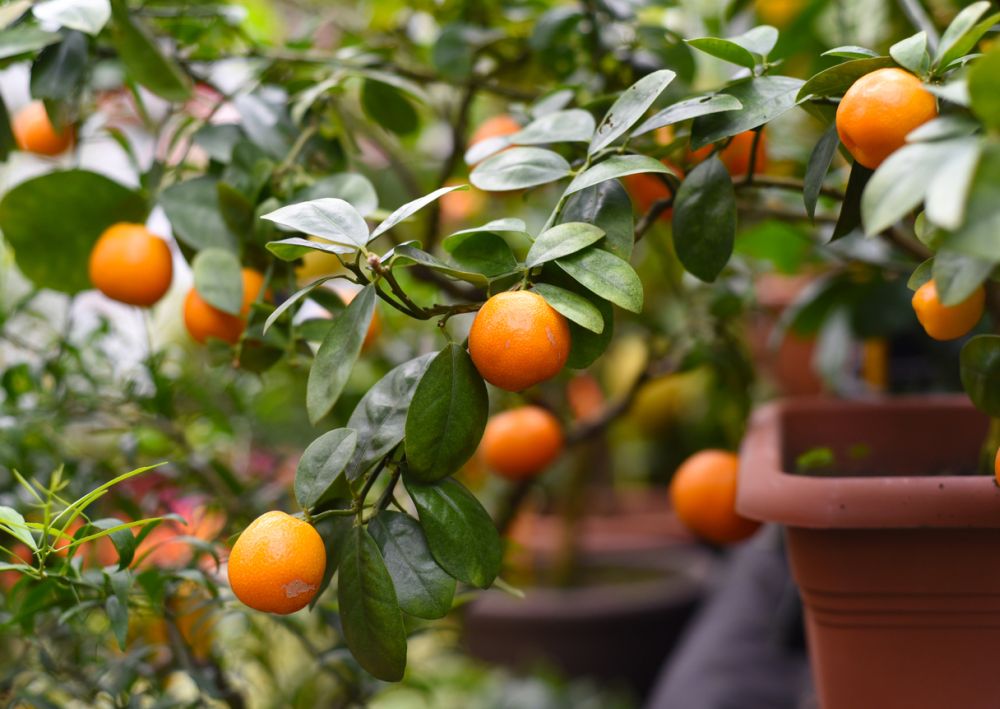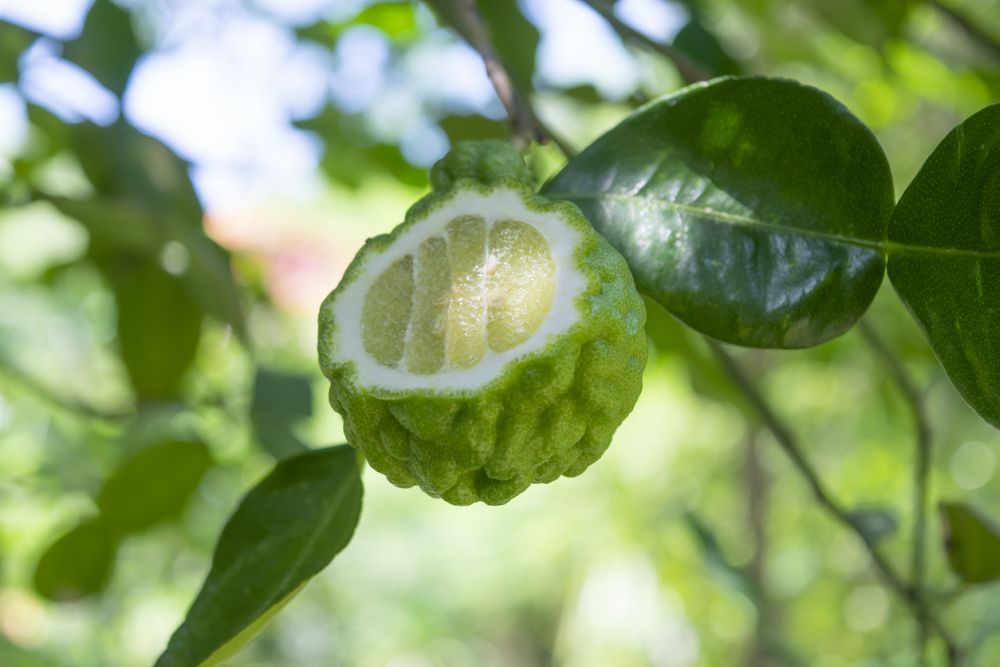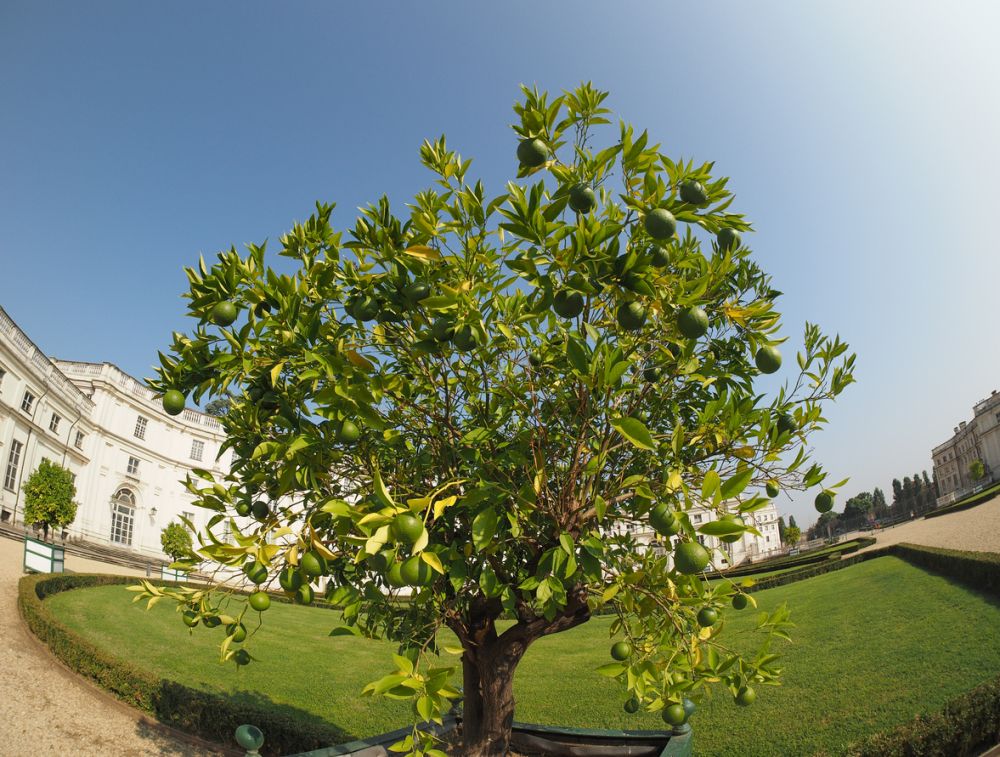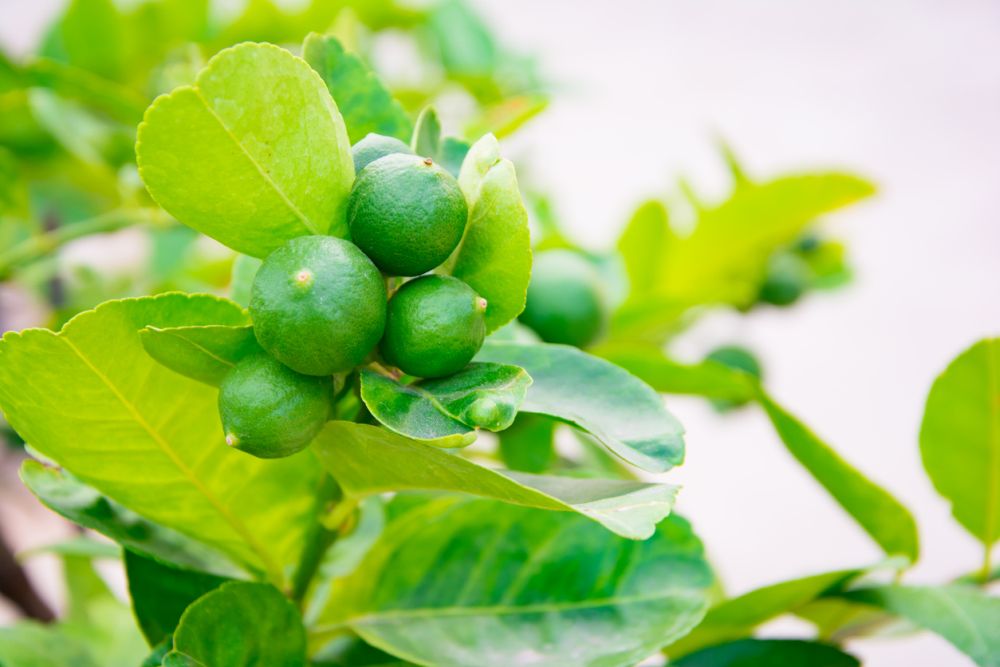5 Best Lime Tree Varieties to Grow in Your Garden
If you’re looking for a tree to add color and interest to your yard, consider planting a lime tree. There are many different lime tree varieties, so keep reading to find one that thrives in your climate.
Limes are less popular than lemons. But health-wise, these green fruits smaller than a golf ball are packed with nutrients and antioxidants.
Limes come in many types with colors ranging from bright green to orange and even dark brown. And not all lime tree varieties produce round fruits. Some are long and slender while others have wart-like growths on the skin, similar to the ugli fruit.
So which are the best lime tree varieties to grow in your garden? This article gives you the lowdown of the main types of limes and a short description of each to help you make the best decision for tree planting.
But first, let’s discover the differences between a lime tree and a lemon tree.
Lime Tree vs Lemon Tree
The lime tree and lemon tree both belong to the same citrus family. They also share some health benefits, like good amounts of vitamin C and antioxidants. But there are some notable differences between the two, such as shape, color, and taste.
Here are some key differences between lime trees and lemon trees:
- Ripe lemons are usually yellow, while ripe limes are green, yellow, orange, or brown.
- Lemons are typically round or oblong, while limes can take any shape from oval to round.
- When it comes to the size, lemons are bigger than limes.
- As far as the taste is concerned, lemons have a mildly tart taste, while limes are in a league of their own with their pungent and sour flavors.
- Although you can use limes and lemons interchangeably in your drinks, things change in baking. Lemons are better than limes for cakes and desserts since they are sweeter, milder, and won’t hold your taste buds hostage for hours on end.
The Best Lime Tree Varieties to Grow in Your Garden
There are many types of lime trees, but we’re just going to focus on five of them: the Key lime tree, Tahitian lime tree, Thai lime tree, Rangpur lime tree, and Calamansi lime tree.
Let’s take a closer look at each type of lime tree:
1. Key Lime Tree (Citrus aurantifolia)
We’re starting the list of the best lime tree varieties with the Key lime tree.
The Key lime tree is a whole family of limes that combines many cultivars and hybrids. It’s also known as Citrus aurantifolia, West Indian lime, and Mexican lime.
Specifically, the Key lime tree is a hybrid of several citrus species. This is why the tree is bushy and squat reaching no more than 12 to 15 feet on a good day.
The following are the specifications for the Key lime tree:
- The trunk of the Key lime tree is smooth and brown. Its branches tree are slender and green, making them resemble twigs. Since these branches are usually covered with thorns, you need to wear gloves when pruning the tree or harvesting the limes.
- The leaves are oval-shaped, thick, and meaty. They start light green and quickly turn dark green with long petioles similar to orange trees.
- Small clusters of white flowers emerge in the spring. They have a strong fragrance that attracts bees and other pollinators to the garden. Plus, the flowers have a 1-inch diameter and both male and female organs, making it easier for the pollinators to get the whole tree pollinated in a few hours and up to 1 day.
- While the trees are known for being hardy, they grow best in zones 9 to 11.
- The fruits are green all over with shiny skin. Once the fruits ripen, they get hints of yellow.
- The thick skin of the round lime covers about 12 segments. Each segment will have between 2 to 3 seeds, making it necessary to remove the seeds before using the limes.
- Key limes can be used to make limeade or cure fish. They also add a lot of flavors to meat and chicken marinades.
2. Tahitian Lime Tree (Citrus latifolia)
The second choice on our list of favorite lime tree varieties to grow in your backyard is the Tahitian lime tree.
The Tahitian lime tree is a hybrid of the Mexican lime tree and another local citrus. It’s sometimes called Persian lime and gets its evergreen qualities and small size from the Mexican lime parent. But it can reach 20 feet in the right conditions.
The following are the specifications for the Tahitian lime tree:
- The branches of the Tahitian lime tree are slim, green, and mostly smooth. It doesn’t have as many thorns as the Mexican lime tree.
- The leaves are both broad and long, unlike the smallish Mexican lime tree leaves. They also have long petioles and are dark green when they mature.
- Flowers appear in clusters in the mid-spring and are white. They have a mild fragrance and still need pollinators. Each flower has both male and female organs.
- When fruits appear, you can tell right away that you have unique limes on your tree. The fruits are typically oval and large unlike the round and small Mexican limes. When they ripen, they could stay green or get blushes of yellow. Each lime is seedless and has 19-12 12 segments.
- You can use Tahitian lime in any recipe that calls for lemons. The Tahitian type doesn’t have as much bite as the Mexican lime, making it fantastic for smoothies and refreshing drinks. Plus, you can garnish alcoholic beverages with slices of this lime for the added flavors.
- Health benefits linked to Tahitian limes include weight loss, boosting the immune system, and alleviating indigestion.
- It’s recommended to grow Tahitian lime trees in zones 9 to 11since they are more cold-tolerant than other lime varieties. As long as the soil is rich, well-draining, and has high pH levels, you won’t have a problem growing the Tahitian lime tree.
3. Thai Lime Tree (Citrus hystrix)
The third spot on our list of the top lime tree varieties is occupied by the Thai lime tree.
If you’re familiar with the ugli fruit (a variety of the Tangelo tree), think of Thai lime as the smaller version of that fruit.
The Thai lime tree also goes by the name kaffir– an evergreen tree with a compact size and spread.
The following are the specifications for the Thai lime tree:
- The branches are so close to the ground that it looks like they’re drooping. They’re covered with many thorns, so be careful when interacting with the tree.
- The leaves are thick, meaty, bright green, shimmer under the sunlight, and grow in double patterns. The upper side of the leaves is glossy and bright, while the underside is dull and pale.
- Much like other lime trees, the kaffir lime fills up with leaves in the early spring and flowers in April. The white flowers with pink blushes grow in clusters and have an attractive fragrance, strong enough to attract bees and butterflies from miles away.
- Small fruits with uneven skin develop after pollination. They remain green throughout, but the bumps on the skin grow larger and grotesque as the lime ripens.
- When it come to the taste, the Thai lime has a strong bite, so you should use it sparingly in sauces, marinades, and garnishes. Since it’s mainly bitter, it doesn’t work well in cakes or other desserts. Still, it has many uses in local cuisines across Southeast Asia.
- Thai limes are prescribed in traditional medicines to treat many ailments related to digestion and weight loss.
- Since it’s native to Thailand and used to tropical climates, the Thai lime tree thrives in zones 10 to 12, thanks to the high humidity and temperature. Compared to other lime tree varieties, the Thai lime tree needs more watering and feeding, and it has a lower tolerance for cold weather and dry soil.
4. Rangpur Lime Tree
The fourth option on our list of favorite lime tree varieties is the Rangpur lime tree.
The Rangpur lime tree is also known as the local lemon tree, Kona lime tree, and mandarin lime tree. It isn’t technically a lime tree but a crossbreed between mandarin and lemon trees.
The following are the specifications for the Rangpur lime tree:
- The Rangpur lime tree produces a large fruit that looks like an orange and tastes like lime.
- When it comes to the size, the tree is evergreen, growing up to 15-20 feet high. With the right pruning, you can reduce this size to about 10 feet tall, ideal for growing in a container if you can meet the watering, feeding, and light requirements.
- The branches of the Rangpur lime tree are thin, green, and covered with thorns.
- The foliage is dense and intricate: long and slender dark green leaves with yellow shades on the upper side.
- The flower buds are often purple with white blooms. They grow in clusters like other lime tree varieties and need pollinators to get fertilized.
- A unique feature of the Rangpur lime tree is that its fruits start green and are already big – larger than other lime types. As they grow, the fruits increase in size and get closer to the dimensions of lemons, changing from green into bright orange.
- Another one-of-a-kind aspect of this lime tree variety (unshared with other cultivars) is that the fruits are easy to peel, which is inherited from the mandarin parent.
- Each ripe fruit has 8-10 segments, and it’s significantly juicier than other limes and even lemons. You can use the ripe fruits for fruit juice, ice tea, and chicken and fish marinades.
5. Calamansi Lime Tree (Citrus microcarpa)
The fifth and final spot on our list of the best lime tree varieties is taken by the Calamansi lime tree.
The Calamansi lime tree is also known as the Philippines lime tree, and it’s prevalent in that country.
The following are the specifications for the Calamansi lime tree:
- It shares similarities with the Rangpur lime three, like the orange skin of ripe fruits. However, unlike the Rangpur limes, the fruits of the Calamansi are small and bitter, and it’s impossible to peel off the skin.
- The diameter of the average Calamansi fruit measures about 1 inch.
- The flesh of the Calamansi lime is very sour, but the skin is rather sweet and full of flavors. You can’t use the skin to make smoothies out of the skin, but the zest adds a sweet flavor to marinades, sauces, stews, and soups.
- Thanks to their compact size and highly ornamental canopies, Calamansi lime trees are grown as decorative trees in gardens and backyards outside of Southeast Asia.
- Calamansi lime trees are easy to maintain. As long as your winters are not overly cold and the sun shines brightly most of the year, the tree will thrive and continue to produce bitter fruits with sweet and aromatic skin.
FAQ
Discover more helpful information about lime tree varieties:
What is the best variety of lime tree?
If you prefer an ornamental tree for your garden, choose the Calamansi lime tree or Thai lime tree. But if you want to use the limes in your meals, pick the Tahitian lime tree or Key lime tree.
What are the different types of limes?
Popular types of lime trees include the Key lime tree, Tahitian lime tree, Thai lime tree, Rangpur lime tree, and Calamansi lime tree.
Which lime is the best lime?
The key lime is widely considered the best lime, thanks to its amazing flavor. You can use it in many recipes, such as coconut key lime trifleor vegan key lime pie.
Conclusion
The lime tree variety you end up growing depends on what you ask of the tree itself. If you’re more interested in the ornamental values of the tree than its bitter fruits, cultivars such as the Calamansi lime tree or Thai lime tree are a good choice. But if you want to push the envelope in the culinary world, you can’t go wrong with the Tahitian lime tree or Key lime tree.
Regardless of your preference, growth problems with your lime tree are inevitable, so it’s best to do your research and know what to expect.
What’s your favorite lime tree variety and why? Let us know in the comments below!






